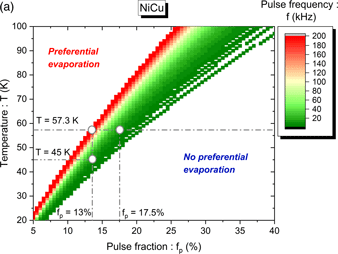Crossref Citations
This article has been cited by the following publications. This list is generated based on data provided by
Crossref.
Dumas, P.
Duguay, S.
Borrel, J.
Hilario, F.
and
Blavette, D.
2021.
Atom probe tomography quantification of carbon in silicon.
Ultramicroscopy,
Vol. 220,
Issue. ,
p.
113153.
Prosa, Ty J
and
Oltman, Edward
2022.
Study of LEAP® 5000 Deadtime and Precision via Silicon Pre-Sharpened-Microtip™ Standard Specimens.
Microscopy and Microanalysis,
Vol. 28,
Issue. 4,
p.
1019.
Jin, Shenbao
Su, Haokai
Qian, Feng
Li, Yanjun
and
Sha, Gang
2022.
Effects of atom probe analysis parameters on composition measurement of precipitates in an Al-Mg-Si-Cu alloy.
Ultramicroscopy,
Vol. 235,
Issue. ,
p.
113495.
Eriksson, Gustav
Hulander, Mats
Thuvander, Mattias
and
Andersson, Martin
2023.
Atomically Resolved Interfacial Analysis of Bone‐Like Hydroxyapatite Nanoparticles on Titanium.
Advanced NanoBiomed Research,
Vol. 3,
Issue. 10,
Hunnestad, K.A.
Hatzoglou, C.
Vurpillot, F.
Nylund, I.-E.
Yan, Z.
Bourret, E.
van Helvoort, A.T.J.
and
Meier, D.
2023.
Correlating laser energy with compositional and atomic-level information of oxides in atom probe tomography.
Materials Characterization,
Vol. 203,
Issue. ,
p.
113085.
Wenner, Sigurd
Hatzoglou, Constantinos
Mørtsell, Eva Anne
and
Åsholt, Petter
2023.
Clustering and Precipitation during Early-Stage Artificial Aging of Al–Si–Mg(–Cu) Foundry Alloys.
Metals,
Vol. 13,
Issue. 3,
p.
557.
Pantenburg, Isabel
Cronau, Marvin
Boll, Torben
Duncker, Annalena
and
Roling, Bernhard
2023.
Challenging Prevalent Solid Electrolyte Interphase (SEI) Models: An Atom Probe Tomography Study on a Commercial Graphite Electrode.
ACS Nano,
Vol. 17,
Issue. 21,
p.
21531.
Bartawi, Emad H.
Marioara, Calin D.
Shaban, Ghada
Hatzoglou, Constantinos
Holmestad, Randi
and
Ambat, Rajan
2023.
Atomic Structure of Hardening Precipitates in Al–Mg–Si Alloys: Influence of Minor Additions of Cu and Zn.
ACS Nano,
Vol. 17,
Issue. 23,
p.
24115.
Rousseau, Loïc
Normand, Antoine
Morgado, Felipe F.
Marie Scisly Søreide, Hanne-Sofie
Stephenson, Leigh T.
Hatzoglou, Constantinos
Da Costa, Gérald
Tehrani, Kambiz
Freysoldt, Christoph
Gault, Baptiste
and
Vurpillot, François
2023.
Introducing field evaporation energy loss spectroscopy.
Communications Physics,
Vol. 6,
Issue. 1,
Shah, Sohail
Thronsen, Elisabeth
De Geuser, Frederic
Hatzoglou, Constantinos
Marioara, Calin D
Holmestad, Randi
and
Holmedal, Bjørn
2024.
On the Use of a Cluster Identification Method and a Statistical Approach for Analyzing Atom Probe Tomography Data for GP Zones in Al–Zn–Mg(–Cu) Alloys.
Microscopy and Microanalysis,
Vol. 30,
Issue. 1,
p.
1.






